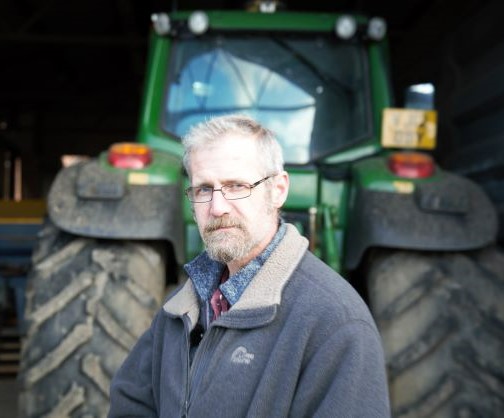- Home
- Knowledge library
- On-farm trials at Strategic Cereal Farm North (2022–2028)
On-farm trials at Strategic Cereal Farm North (2022–2028)
Summary
Host farmer: David Blacker
Location: Church Farm, Yorkshire
Duration: 2022–2028
AHDB Strategic Cereal Farms put cutting-edge research and innovation into practice on commercial farms around the UK. Each farm hosts field-scale and farm-scale demonstrations, with experiences shared via on-farm and online events to the wider farming community.
This page features a summary of information published in the latest annual report.
Developing a soil health baseline
Headlines
This work carried out in-depth soil assessments (topsoil and subsoil) to develop a baseline for soil health.
The AHDB/BBRO soil health scorecard was used to help capture interactions between soil physics, chemistry and biology.
Soil health information was used to understand the impacts on crop health and provide a way to measure the impact of management.
Across all fields in this baseline year (2022/23):
- Topsoil chemical properties were generally good
- Topsoil and subsoil structure was relatively poor
- Earthworm numbers were generally depleted
Action points
- The baseline results highlighted the need to alter management to improve soil structure and earthworm populations
- When baselining soils, it is important to first divide fields into soil texture zones
- The soil health scorecard resources explain when and how to assess soils and gives practical guidance for management interventions
Soil health, nutrient analyses and crop performance
Headlines
This work assessed the impact of soil health on crop development and performance and evaluated if there is a correlation with soil nutrient availability.
In this baseline year (2022/23):
- Rooting was variable between and within fields
- Nitrogen levels in wheat and bean tissue samples were low
- Wheat grain nutrient analysis indicated that nitrogen was probably limiting (phosphorous, sulphur and manganese grain concentrations were also low)
- Wheat yields ranged from 7.9 t/ha to 12.1 t/ha (depending on the field and soil zone)
- Calcium and molybdenum bean concentrations were low, indicating potential deficiencies
- Bean crop grab sample results were generally lower than the ADAS Yield Enhancement Network (YEN) bean averages
- Despite this, average bean yield was high (about 4.6 t/ha)
Action points
- Measure and check different crop metrics to understand how crop yield is being formed through the season and to identify areas to improve performance and enhance yields
- The annual report provides examples of crop metrics and how to use them
Analysis of farm data
Strategic Cereal Farm North has over a decade’s worth of farm data, covering yield, soil and weather. This work performed an in-depth analysis of this geospatial data to inform management.
Headlines
- Waterlogging was probably the biggest cause of yield variation
- In most seasons, yield was lowest at the downhill ends of fields
- Average field yields were also lower in the seasons with wetter autumn/winter conditions
- Good wheat yields (for the Yorkshire and the Humber region) were achieved across the fields and years studied, but oilseed rape yields were unreliable
- Yield was negatively correlated with the ratio of organic matter (OM) to clay content
- The result is contrary to the prevailing idea that high OM indicates a healthier, higher-yielding soil
- This is unlikely to be a causal relationship, with higher SOM levels also associated with water-logged soils
Action points
- Examine yield maps in conjunction with soil maps and known field issues to understand the causes of yield variation
- Where waterlogging has a major impact on yield, consider improving drainage
Impact of drainage approaches
Drainage was recently installed across one of David's fields (at various widths), providing a perfect opportunity to assess the impact on soils and crops, as well as the economic return.
Headlines
In this baseline year (2022/23):
- On heavy clay soil, drainage improved winter wheat yield, compared to old drains and no drainage zones
- Soil structural condition was poor in the subsoil and moderate to poor in the topsoil
- We will continue to assess soil health to fully evaluate the impact of the new drainage installation
Action points
- Assess fields for evidence of poor drainage:
- Surface ponding or saturated topsoil are the more obvious signs
- Below-surface waterlogging may not be obvious at the surface but may be evident by poor crop yields
- Refer to the AHDB Field drainage guide on how to monitor and improve drainage



.JPG)
